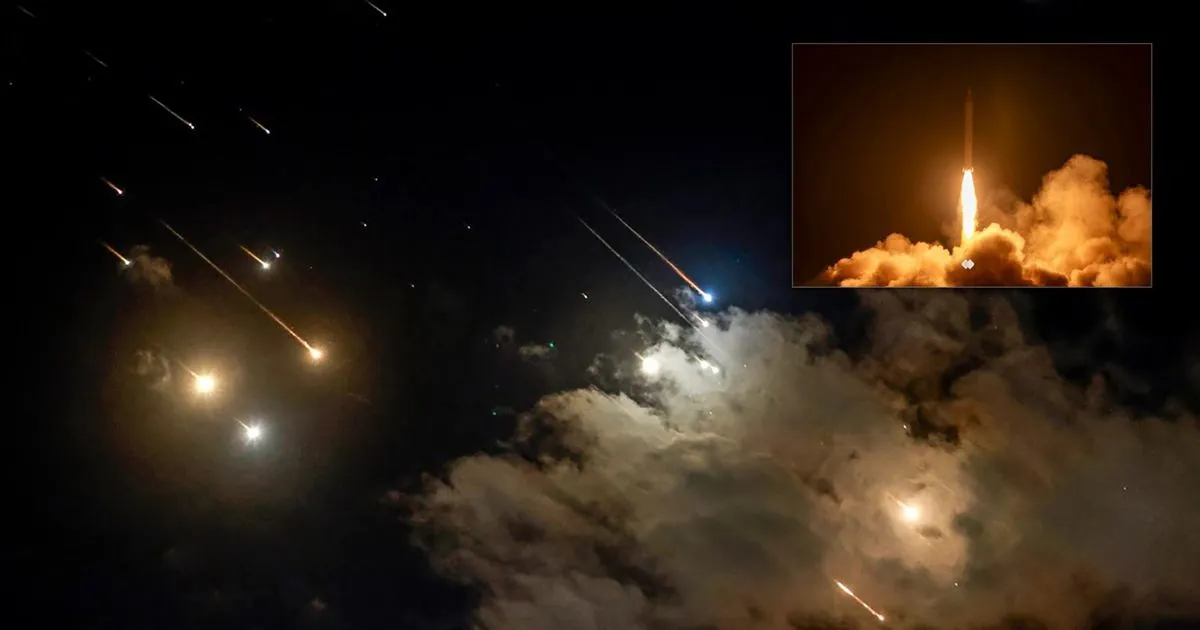Four days ago, Iran executed a significant ballistic missile attack against Israel, marking only the second direct assault of its kind. This event has drawn attention for its extensive scale yet limited consequences, according to analysts.
Iran initiated the attack with minimal warning, launching at least 180 high-speed ballistic missiles towards Israel. A Washington Post analysis reveals that over two dozen missiles breached Israeli defenses, surpassing the number that penetrated in the previous attack five months and 22 days ago. Some missiles reportedly caused damage near Israeli military and intelligence facilities, though reports of critical damage have been scarce.
Evidence suggests that Iran employed its most advanced munitions in this attack:
- Rapid-launch missiles
- High-velocity projectiles
- A larger number of launchers than previously known
Iranian state media also reported the use of an advanced ballistic missile that had not been deployed before.
This recent attack and its predecessor provide unprecedented insights into Iran's missile capabilities and Israel's ability to intercept or withstand them. Some experts question the effectiveness of Tehran's extensive missile arsenal, which U.S. officials have estimated to be the largest in the Middle East.
The attack diverged significantly from Iran's first missile strike on Israel, which occurred on the evening of April 13, 2024. That earlier assault involved over 300 missiles and drones, including approximately 170 drones and 150 missiles, with around 30 being cruise missiles. Israel's military claimed to have intercepted or caused the failure of 99 percent of these projectiles, with only minimal damage reported.
Analysts note that the recent attack appeared to be a more serious attempt at inflicting damage, possibly in response to Israeli actions against Iran's allies, including Hezbollah in Lebanon and Hamas in Gaza. The strike was reportedly retaliation for the killings of Hasan Nasrallah, the leader of Hezbollah, in Beirut about a month ago, and Hamas leader Ismail Haniyeh in Tehran approximately three months ago.
Behnam Ben Taleblu, a senior fellow at the Foundation for Defense of Democracies, commented on the motivation behind the attack: "They wanted to wash away blood with blood."
The U.S. government reported that Iran launched around 200 missiles, while Israeli officials later identified 181 missiles. Analysts, citing Iranian state media images, indicated that all appeared to be ballistic missiles. Some experts suggest that Iran may have used more modern solid-fuel missiles, which can be launched more quickly than liquid-fueled variants.
Iranian state media reported the use of long-range Ghadr and Emad missiles, as well as the more advanced "hypersonic" Fattah missiles. While the use of Fattah missiles was not confirmed by Iranian or Israeli officials, evidence suggests their potential deployment.
"This is a significant improvement for the Iranians. The extent to which this is down to the use of more ballistic missiles to saturate Israeli defenses or different types [of missiles] remains an open question."
A Washington Post analysis of satellite imagery and visuals found that at least two dozen missiles struck or came close to two military sites and one intelligence site in Israel. Separately, a team from the Middlebury Institute of International Studies found at least 32 impact points at Israel's Nevatim Air Base in the Negev Desert, suggesting that 16 percent or more of the missiles fired hit that target.
Despite the increased effectiveness of this attack compared to the previous one, experts suggest that Iran may have revealed the extent of its missile technology. Jeffrey Lewis, one of the experts involved in the Middlebury assessment, noted that ballistic missiles with conventional warheads have a high margin of error, especially when fired from long distances.
As tensions remain high, some analysts speculate on potential future scenarios. Mick Mulroy, a former senior Pentagon official under the Trump administration, suggested that Iran might consider pursuing nuclear deterrence if its conventional missile arsenal proves insufficient for deterrence.
The recent attack has undoubtedly provided valuable insights into both Iran's offensive capabilities and Israel's defensive measures, potentially reshaping strategic calculations in the region.
